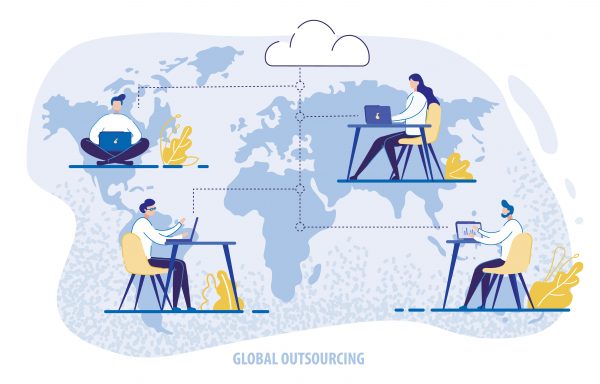The Top 3 things employees in globally dispersed teams need to succeed
- 5 Min Read
How can you guarantee success for your global teams? Here’s three top tips.
- Author: Hannah Prince
- Date published: Jul 24, 2019
- Categories

The nature of our working environment is constantly changing; as the number of companies operating globally increases so too does the demand for remote working.
Of course while this new approach to work has benefits – the ability to work on projects 24/7, gain rich cultural perspectives and serve customers across the world more effectively – there are potential downsides too. The reality is that employees can end up working longer hours, feel isolated and struggle to make time for their personal life.
At Insights Learning and Development, we carried out original research into what it feels like to work in globally dispersed teams (GDT). As part of this study, we explored peoples’ experiences of working in different physical locations and time zones.
Our findings suggest the following three things must be satisfied to create the optimal employee experience:
Employees need to experience a sense of belonging to their team
For decades, psychologists have identified social connection as a fundamental human need important for development and growth, so it is not surprising that, regardless of where people worked, they expressed a desire for face-to-face connection.
This close proximity to others was described as key, not only for the best outputs but also developing empathy for others which leads to more meaningful working relationships. For example, if I email someone in a different office and they don’t get back to me for a week, it might lead to my least respectful interpretation of them. If I can see someone, I am more likely to be able to see if they are really busy and think ‘I’ll give them another week’.
Top tips for managers:
- Where possible, have regular face-to-face contact built in. It doesn’t have to be in the office – it could be coffee or lunch.
- Allow people to experience different environments from time-to-time, see what life is like for others.
- If two or three members of your team are remote, make the extra effort to make sure they feel included. For example, in a meeting with lots of people in the room and a handful dialling-in, make sure you create space for them to contribute to the conversation.
- Be mindful of unconscious bias in your language. For example, be aware of referring to ‘us’ and ‘them’.
Employees need to be trusted to do their job and share decisions on how, where and when they work
For flexible working to be a success, remote workers need to feel trusted by leaders and colleagues. Individuals spoke of needing to be trusted to work flexibly and have autonomy over their environment, location and hours. They also reported that working from home means visibility of them working hard or at all is reduced, leading to insecurity; like they are not working enough and feel the need to send emails at all hours of the day.
Fundamentally, organisations need to accept that flexible working is required and trust that employees can manage their time effectively. The result of this trust is that it bolsters engagement, job satisfaction, productivity and wellbeing. Setting strict boundaries tends to have the opposite effect – it can demoralise individuals and potentially lead to them rebelling. If this trust is abused, then of course this is a conversation that needs to be had between employee and manager.
Top tips for managers:
- Come up with some ideas as a team around what makes people feel trusted. Help stimulate conversations between all team members – both on and off-site.
- Minimise pressure to conform to a set way of working. For example, do you need core working hours every day? How does that add to your teams effectiveness and output?
- Allow everyone to have input into key decision making, including the hours they work and where they do it.
- Take a leap of faith! Sometimes you have to trust that employees are working hard, no matter whether or not you can see them.
Employees need education and support to work in a GDT
Respondents asked for appropriate levels of support to help them master the new way of working. Though GDTs are increasingly common, people said they would benefit from additional support to master working in multiple time zones, with new technologies and remotely from others.
The key to successfully adapting to this shift requires a mindset change; employees, employers and leaders must learn to accept that the 9-5 working day is largely gone and we no longer have physical contact with all our colleagues all the time. Individuals also need support to learn how to adapt their mindset so that GDTs are viewed as an opportunity to grow and develop.
On the practical side, there was also clear expectation that better access to technology is needed, and that crucially employees need training to be able to use it, to effectively communicate, socialise and problem solve.
Top tips for managers:
- Expectations need to be clear and realistic – how are your teams set up across time zones and locations?
- Identify guidelines for virtual meetings. For example could you make sure all team members take conference calls from their desk, no matter where they are located?
- Role model behaviours you want to see. A leader who sets up a meeting needs to be considerate to everyone in the team, not just those in the office.
- Make sure people have access to effective technology, and understand how to use it properly, through formal training.
Hannah Prince is the Business Psychologist at Insights Learning and Development. She has a passion for understanding the underlying psychological factors required for high performance in professional contexts.









